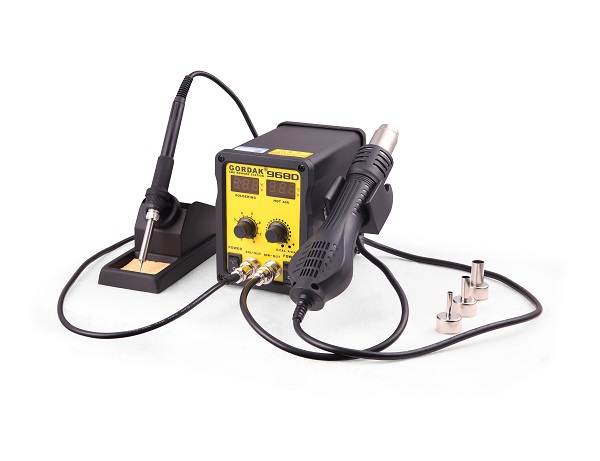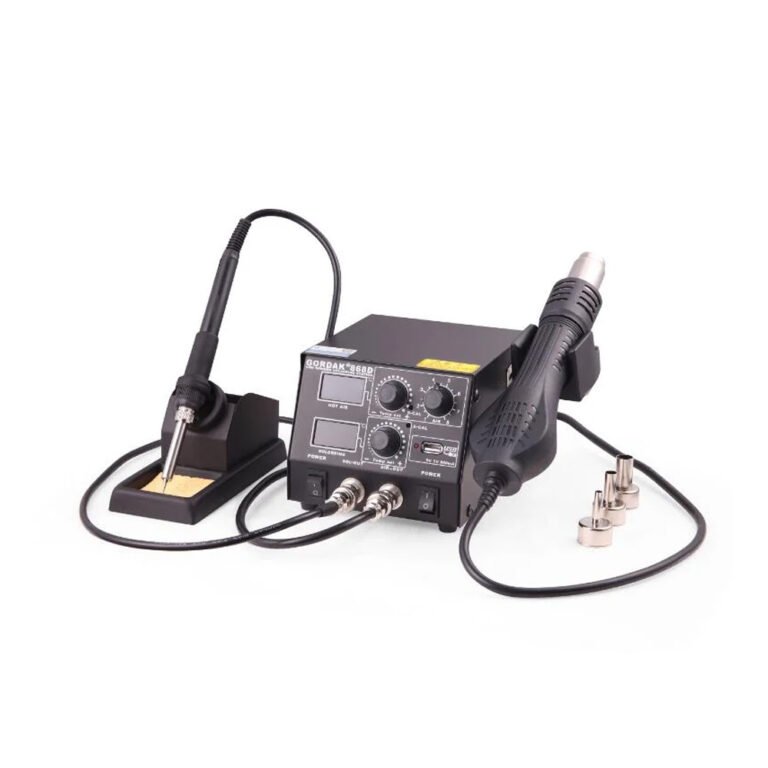Have you ever wondered about how to use a soldering iron? Soldering irons can be exceptionally useful tools, but knowing how they work is vital to get the most from them and avoid potentially getting injured while using a soldering iron. Luckily, our experts have outlined some of the key things you need to know about using a soldering iron as follows to help you learn more about these crucial pieces of equipment.

How to Use a Soldering Iron: A Beginner’s Guide
Using a soldering iron can often seem difficult, but this isn’t necessarily the case. However, using a soldering iron is relatively straightforward once you know how. Luckily, we’ve outlined some of the key things you need to know to ensure you’re ready to get started.
#1 Learn Basic Soldering Safety
Before you begin soldering, it’s vital to first learn the basics of soldering safety. Indeed, soldering irons, by their nature, achieve exceptionally high temperatures, and this can put operatives (and those around them) at risk.
As such, make sure you know the basics of staying safe first, including the core safety equipment you’ll need (such as eyewear, gloves, and the like). Always make sure to use the soldering iron in a well-ventilated and spacious area where there are no trip hazards and the like, too. These are just a few safety tips when soldering; you may need to undertake a soldering safety course if you’re still unsure.
#2 Prepping a Soldering Iron
Once you have ensured all of the key safety requirements for soldering are met, you’ll next need to prep the soldering iron by tinning the tip. In order to do so, ensure the tip of the iron is attached tightly, then allow the iron to heat up. Once the soldering iron has heated up, wipe the tip with a damp sponge (don’t touch the tip directly!) Then, once the tip is clean and hot, simply touch it to the solder, allowing this to coat the tip evenly.
#3 Prepping the Component
Once the soldering iron’s ready, ensure it’s secured somewhere safe, then look at prepping the component. This is achieved by mounting the component, then heating the soldering iron to a temperature of 300 degrees. Then, heat the copper pad and the resistor lead by holding the soldering.
#4 Apply the Solder
At this point, you can look at applying the solder. Touch the solder to the joint (without moving the soldering iron from the copper pad and lead. Then, allow the solder to melt when touched; you’ll need to ensure the joint is suitably hot enough for this, as a cold joint won’t melt the solder well.
#5 Finishing Up
By now, the solder is nearly complete; all you need to do is remove the soldering iron from the solder and leave it to cool down slowly, before removing any surplus wire that may be left from the leads.
Final Thoughts
Although soldering irons are incredibly useful tools, it’s well worth keeping in mind that they can also be somewhat dangerous. Furthermore, getting the best results from your soldering iron use may be difficult without having an efficient process and a thorough understanding of how these tools work. If you have further questions, please contact us at info@gordakelec.com.
Soldering Basics & Tutorials
A Step-by-Step Guide to the Soldering Process
An Introduction to SMD Soldering Techniques
A Beginner’s Guide to SMD Soldering
DIY PCB Soldering: Tools, Tips, and Techniques
How to Use a Soldering Iron – A Beginner’s Guide
Essential Tools and Supplies for Soldering Beginners
Essential Electronics Soldering Tips and Tricks for Beginners
Essential Tools for Soldering Circuit Boards
The Importance of Soldering in Electronics



